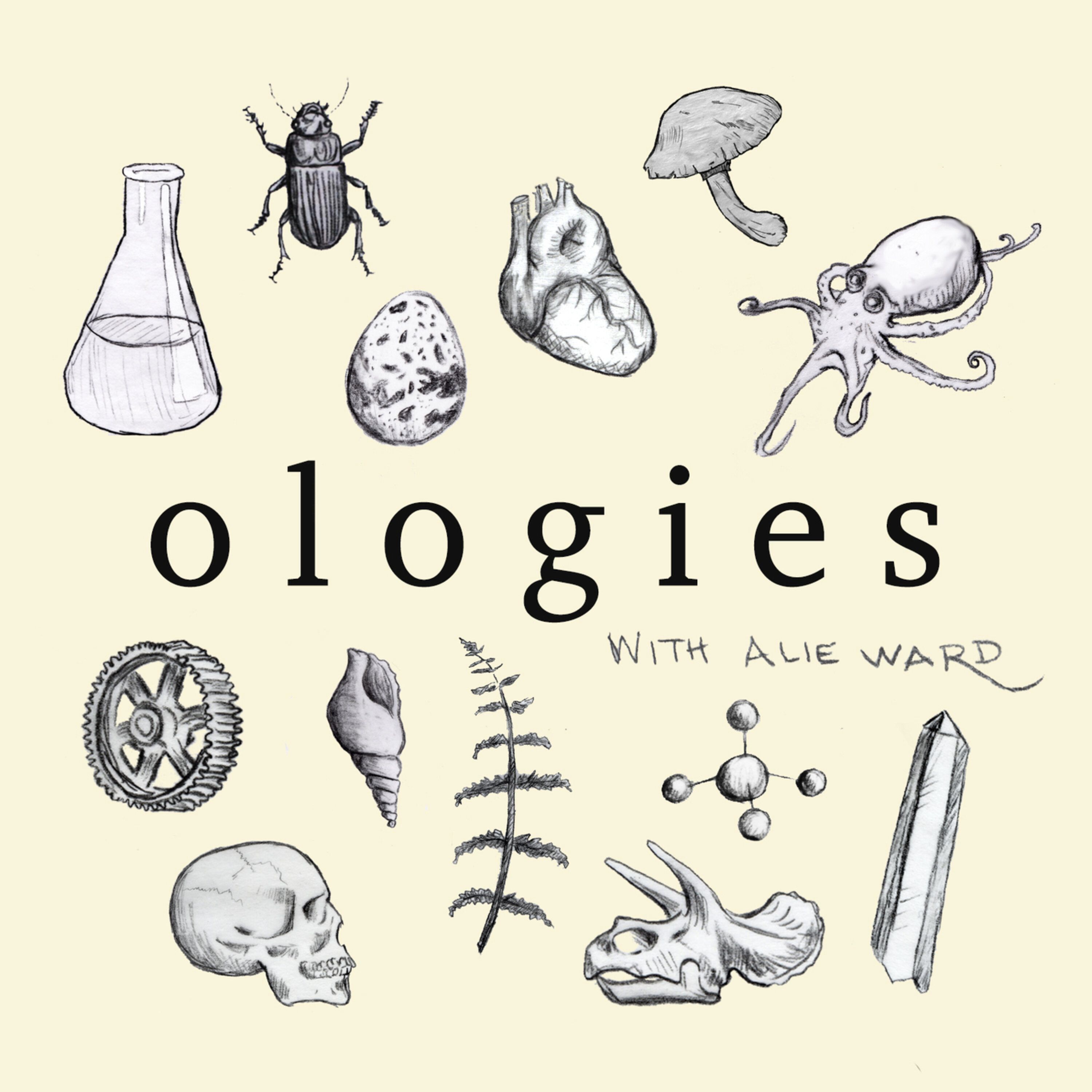
Heliox: Where Evidence Meets Empathy 🇨🇦
Join our hosts as they break down complex data into understandable insights, providing you with the knowledge to navigate our rapidly changing world. Tune in for a thoughtful, evidence-based discussion that bridges expert analysis with real-world implications, an SCZoomers Podcast
Independent, moderated, timely, deep, gentle, clinical, global, and community conversations about things that matter. Breathe Easy, we go deep and lightly surface the big ideas.
Curated, independent, moderated, timely, deep, gentle, evidenced-based, clinical & community information regarding COVID-19. Since 2017, it has focused on Covid since Feb 2020, with Multiple Stores per day, hence a sizeable searchable base of stories to date. More than 4000 stories on COVID-19 alone. Hundreds of stories on Climate Change.
Zoomers of the Sunshine Coast is a news organization with the advantages of deeply rooted connections within our local community, combined with a provincial, national and global following and exposure. In written form, audio, and video, we provide evidence-based and referenced stories interspersed with curated commentary, satire and humour. We reference where our stories come from and who wrote, published, and even inspired them. Using a social media platform means we have a much higher degree of interaction with our readers than conventional media and provides a significant amplification effect, positively. We expect the same courtesy of other media referencing our stories.
Heliox: Where Evidence Meets Empathy 🇨🇦
Lion's Teeth Marks in British Graves: The Roman Empire's Brutal Entertainment Industry
Evidence hidden in bones tells a bloody story of Roman Britain that changes everything we thought we knew.
When we think of Roman gladiator combat, our minds normally drift to the Colosseum in Rome, or perhaps to the sun-baked arenas of North Africa and the Mediterranean. Few of us picture lions stalking the misty shores of Britain. But that's exactly what archaeologists have discovered: concrete evidence of lions in York.
This isn't just any discovery. It's a paradigm shift in our understanding of Roman Britain and the true reach of imperial power and its brutal entertainment industry. The Driffield Terrace Cemetery in York (Roman Eburacum) has been puzzling archaeologists for years. Located along a main road outside the Roman city, it's not your typical burial ground:
- 70% of the burials were decapitations (compared to the usual 5-6%)
- Most decapitations were back-to-front, suggesting execution
- The population heavily skewed toward men aged 18-45
- Almost no women or children
- One individual buried with iron rings still around his ankles
This is Heliox: Where Evidence Meets Empathy
Independent, moderated, timely, deep, gentle, clinical, global, and community conversations about things that matter. Breathe Easy, we go deep and lightly surface the big ideas.
Thanks for listening today!
Four recurring narratives underlie every episode: boundary dissolution, adaptive complexity, embodied knowledge, and quantum-like uncertainty. These aren’t just philosophical musings but frameworks for understanding our modern world.
We hope you continue exploring our other podcasts, responding to the content, and checking out our related articles on the Heliox Podcast on Substack.
About SCZoomers:
https://www.facebook.com/groups/1632045180447285
https://x.com/SCZoomers
https://mstdn.ca/@SCZoomers
https://bsky.app/profile/safety.bsky.app
Spoken word, short and sweet, with rhythm and a catchy beat.
http://tinyurl.com/stonefolksongs
Curated, independent, moderated, timely, deep, gentle, evidenced-based, clinical & community information regarding COVID-19. Since 2017, it has focused on Covid since Feb 2020, with Multiple Stores per day, hence a large searchable base of stories to date. More than 4000 stories on COVID-19 alone. Hundreds of stories on Climate Change.
Zoomers of the Sunshine Coast is a news organization with the advantages of deeply rooted connections within our local community, combined with a provincial, national and global following and exposure. In written form, audio, and video, we provide evidence-based and referenced stories interspersed with curated commentary, satire and humour. We reference where our stories come from and who wrote, published, and even inspired them. Using a social media platform means we have a much higher degree of interaction with our readers than conventional media and provides a significant amplification effect, positively. We expect the same courtesy of other media referencing our stories.
This is Heliox, where evidence meets empathy. Independent, moderated, timely, deep, gentle, clinical, global, and community conversations about things that matter. Breathe easy. We go deep and lightly surface the big ideas. Okay, let's unpack this. You know what hits you right away. It's when something you think you've got a handle on just, well, throws a massive curveball. And in the, you know, the well-trodden world of Roman gladiatorial combat, something really surprising has popped up. The first actual physical evidence of humans tangling with animals in the arena? In Roman Britain? I mean, lions. In York? That's not the picture you usually conjure up, is it? No, it really isn't. And what's fascinating here is how this one discovery sort of shines a light on a particularly brutal aspect of Roman entertainment, especially in a province we often think of as being, you know, on the edge of the empire. Right. We have these amazing amphitheaters scattered across Britain. Yeah. Yeah. And little artistic glimpses on pottery, mosaics, and even some skeletal remains that kind of whisper tales of gladiator life. A bit like those famous finds at Ephesus. Ah, yes. Ephesus with the head injuries and the diet analysis. Exactly. Distinct cranial trauma. Blunt force, sharp force. We've even seen similar sorts of injury patterns in finds from London near the Walbrook. But the direct proof, the smoking gun, so to speak, of gladiators facing animals etched onto bone. That's been a real gap in the British record, which makes this find in York just incredibly significant. Absolutely. So here's the mission for this deep dive. We're going to really get into this brand new research. It details some unique clues found in the bones from the Driffield Terrace Cemetery in York. specifically we're zeroing in on markings on one particular skeleton markings that look an awful lot like they came from a large animal's bite look this isn't just another dusty fragment right it's a potential window into a truly visceral side of roman britain we'll be pulling apart the archaeology what the old texts might tell us the forensic science everything really to bring you the most compelling bits yeah and to really get why this bite mark is so remarkable we need to set the scene a bit. The Driffield Terrace Cemetery in York. Roman Ebruchum, as it was known. Now, York was a big deal. First, a key legionary fortress, later a colonia, a proper Roman city, a vital hub. A major center. Definitely. And like you'd expect in Roman times, people were buried outside the city walls, typically lining the main roads. Driffield Terrace fits that pattern perfectly. It's right along the road heading south towards London. But hang on, this wasn't your average Roman graveyard, was it? When they dug it up back in the early 2000s, some seriously weird stuff started coming to light. I mean, get this, something like 70% of the burials were decapitations. It's an astonishing number. Just nuts compared to the usual, what, 5% or 6%, maybe a bit higher in rural areas, but 70%. Exactly. And here's another twist. As you said, most of these weren't neat front-to-back decapitations, they were mostly back to front, which really points towards execution, doesn't it? Yeah, much more suggestive of that. And some heads weren't even fully severed. It suggests maybe a quick brutal end rather than some careful funerary ritual. Okay. So this alone tells us we're dealing with a very specific group of people, likely an unfortunate group. Adding to that picture, the cemetery's population was heavily skewed. Mostly men, aged between, say, 18 and 45. Hardly any women or children found there. Which is unusual even for Roman cemeteries near military sites, right? That level of imbalance. It's extreme, yeah. Then there's the lack of elaborate grave goods. Oh. Suggests maybe lower social standing. Though, you know, in some ways that fits with burial customs of the period. But there was that one really strange case, wasn't there? SK-37. Ah, yes. Individual SK-37. Buried with iron rings still around his ankles. That just screams captivity or forced labor or something like that. It certainly does. So we've got this sanitary packed with young men, loads of them executed by decapitation, not much buried with them. Okay, but here's where it gets really interesting for the gladiator angle. The bones themselves. When they looked closely, they found a lot of healed injuries. Stuff that happened before death and had time to mend. Skull fractures, broken teeth, busted knuckles, even fractured vertebrae. These aren't just, you know, everyday accidents. They point to repeated violent encounters, interpersonal violence. and significantly more so than even in the Ephesus Gladiator Cemetery, actually. About 23% prevalence here versus 16% there. Wow. And what about the location of those injuries? Well, what's also telling is that many of the head injuries were on the left side. Right, which is exactly what you'd expect if someone's right-handed and they're facing off against you in a fight. Classic combat pattern. Precisely. And if we try to connect this to the bigger picture, the isotopic analyses, you know, where they look at chemical signatures in the bone. figure out where people came from, what they ate. That's the one. It kind of muddies the waters, but in a really fascinating way. These analyses suggest these guys came from a surprisingly wide range of places, different geographical origins, diverse diets, not what you'd typically see in a standard Roman cemetery in Britain. Some even showed genetic links to the Middle East, believe it or not, and Scandinavia. So a real mix. What did people originally think this place was then? Well, the weirdness led to theories. mass execution, maybe under Emperor Caracalla. But the dating of the burials, the time frame, it didn't quite fit. And the sheer amount of healed trauma, the violence that made a straightforward military burial ground seem less likely to. The patterns just didn't quite match typical soldier injuries. So where does that leave us? The gladiator connection seems stronger with that trauma evidence. Those similarities and healed head injuries between Droufield Terrace and Ephesus, a known gladiator burial site, they're really striking, aren't they? They are. Very striking. The tricky part, though, is the execution method. Those back-to-front decapitations don't neatly align with how we think injured gladiators were typically dispatched, usually thought to be a cut to the throat. Though even that's debated among experts, right? It is, yeah. It's not entirely certain. Which has led to another quite compelling idea. Could this be a burial ground for a familia gladiatoria? A gladiator troop, like a traveling company. Exactly. Possibly even one attached to the Legion based in York, the 6th Legion Victrix. That might explain why they got such a prominent burial spot close to the fortress, despite maybe being lower status military connections. Huh. And do we have evidence for Legions having their own gladiators? We do have occasional mentions in historical records of these Legionary familias. It's not common, but it's attested. Okay, so all this really sets the stage for the star of the show then. Skeleton 60T19, the one with the potential bite marks. That's him. He was one of three adults buried together in a single grave, dated to the mid to late 3rd century AD. And what's interesting is that this grave seems to have been cut into, or was very close to, an area with an earlier burial mound, and that mound contained horse bones that had clearly been butchered and also gnawed on by animals. So, context. Right, and the skeleton itself, 60T19, good condition. Remarkably good condition, yeah, considering its age. Pretty complete. And what could the bioarchaeologists tell us about him? Okay, so, biologically male. Probably aged between 26 and 35 years old. Height around 172 centimeters, so about 5 foot 8 inches. Average height for the time? Pretty much. Now, his isotopic signature, remember, that tells us about origins, suggested he came from a lower latitude, a warmer climate. Okay, so potentially not local. Potentially. I mean, it could still mean somewhere in southern or western Britain, technically. But it does hint, perhaps, at a more southerly origin. North Africa, Italy, Artesavishur. Interesting. And like the others, decapitated. Hmm. Yes. But his was different. A single, clean cut from behind. And his head hadn't been chucked aside. It had been carefully placed back, more or less in its anatomical position, facing upwards in the grave. Okay, so a bit more caretaken there, maybe. But the really unique thing. The marks. The marks. That's the key. a series of small depressions found on both sides of his pelvis. Near the iliac crest, that's the sort of ridge of your hip bone you can feel, and the anterior superior iliac spine, or asus, that bony point at the front of your hip. The really prominent bits. Easy target. Potentially. And these weren't clean breaks or sharp cuts like you'd get from a sword or an axe. On the left hip bone, the ilium, there were several distinct indentations, some shallower, some a bit deeper, more rounded. On the right ilium, there was a line of three indentations near the front, near the aces, and two more linear, almost crushed looking areas towards the back, laterally. Crushed? Yeah, like compressed bone. And what's really significant here, tiny fragments of bone were found still stuck inside some of these lesions. Whoa. Okay, so what does that mean? It suggests the bone wasn't dry when the marks were made. There was likely still soft tissue present holding those fragments in. Perimortem, around the time of death. Got it. So the initial thought was carnivore, bite marks. Exactly. Could these be bite marks? And to really figure this out, they needed detailed forensic analysis. This wasn't just a quick look. Right. You can't just eyeball that kind of thing. What did they do? They used a technique called 3D structured light scanning. Fancy. It is, but it's incredibly useful. It lets you create these super detailed digital models of the bone surface, capturing the exact shape, position, depth of the lesions, Way more precise than just photos. Okay, so you get a perfect digital copy of the damage. Then what? Then you compare it. This 3D scanning allowed for direct comparison with existing research. There's a whole body of work on bite marks and scavenging damage caused by large cats, lions, tigers, leopards, even cheetahs. From controlled studies, often using modern animal remains, so they know exactly what kind of damage each animal makes. Right, they have a library of bite marks, essentially. Pretty much. And these studies show that big cat bites often create these puncture wounds, sometimes surprisingly deep, actually, up to nine centimeters in some cases. And they can occasionally leave curved marks from their incisor teeth, the front teeth. Oh, okay. An important point is that the depth of the mark on the bone is often less than the full length of the tooth itself. Because, you know, there's soft tissue muscle, fat, skin covering the bone when the bite happens. Makes sense. So did the marks on 60T19 match up? They showed very similar characteristics, yes, including, crucially, a slight curvature within some of the damaged bone areas consistent with those carnivore tooth shapes. Okay, so looking like a big cat. But how do you rule out other animals? Could it have been, say, a pack of dogs or a bear? We know bears were around. Good question. They considered those. Canine bite marks dogs. Wolves, they tend to cause mainly soft tissue damage. They often grab and pull limbs. They rarely go for the pelvis like this, and the marks look different. More scoring, less distinct punctures usually. Okay, so not dogs. Bears. Bear attacks are typically way more destructive. They involve paws and claws, not just teeth. You'd expect significant skeletal injury across the body chest, back focus, often head, neck, upper limbs get mauled. Very different pattern. Right. What about wild boar? They were sometimes used in arenas, weren't they? Tusks could do damage. They could, yes. Vortexks inflict deep, often slashing or gash-like injuries, particularly to the hips and thighs. But again, the nature of the injury is different from these distinct, fairly small, puncture-like depressions on 60T19's pelvis. So after ruling those out... The conclusion, based on this detailed comparison, is pretty convincing. The bite marks are most consistent with those made by a large feline. A big cat. Yeah. And most likely a lion, based on the specific shape and comparing it with documented bite patterns. Lions are the prime suspect. A lion in York. Wow. But did the lion kill him? Probably not directly. The location of the marks, just on the pelvis, suggests this was likely scavenging that happened around the time of death. Maybe the body was left exposed for a short time after death, perhaps in the arena itself or nearby, before burial. So the animal was chewing on the hip area after he was already dead or dying. That seems the most likely scenario, which means the decapitation. Well, that was probably either to ensure death, maybe a coup de grace after the animal encounter, or perhaps it was just part of the standard, albeit brutal, disposal practice. It's a very unusual cemetery. Okay, so we're fairly confident it's a lion bite, likely scavenging. But could the marks be something else entirely, like weird weapon injuries? They looked into that too. Could they be perimortem, penetrating weapon injuries? Well, the lesions on 60T19 are generally smaller and lack the kind of beveling that angle edge you sometimes see with, say, trident injuries. There's an example of that for emphasis. And aerotrauma usually produces differently shaped wounds. Plus, the way these marks cluster together, it just fits much better with multiple tooth impacts from a single bite or a couple of bites. Right. Not like separate weapon strikes. What about just damage after burial, taphonomic damage, animals digging things up later? Unlikely, based on the appearance. The lesions have the same color and surface texture as the surrounding undamaged bone. They don't look like fresh breaks on old bone. And critically, remember those tiny bone fragments still adhering inside the lesions? Yeah. That strongly indicates soft tissue was present when the injury occurred, which points firmly to perimortem timing around the time of death, not long after burial when the bone was old and dry. Okay, so the evidence for a perimortem lion bite seems pretty solid, actually. It's compelling. Very compelling. Right. So if we accept this is a lion bite, likely from some kind of arena context, we need to put this into the bigger picture of Roman entertainment in Britain. We know from writers in Rome that beast hunts, the Venetians, were huge, right? People fighting animals, animals fighting animals. It was big entertainment. Absolutely. A massive part of Roman public life, especially in the city of Rome itself. We've got inscriptions, mosaics all over the empire celebrating these events, the sponsors, the animals. But what about Britain? Has the direct archaeological evidence been strong for this kind of thing? Honestly, it's been a bit scarce. Limited. Despite the amphitheaters. Well, we have the remains of amphitheaters, yes. Impressive ones like at Caroleon in Wales, Silchester and York almost certainly had one, even if its exact location is debated. These structures tell us they could host large-scale events. But the buildings themselves, they rarely give specific details about what happened inside. No programs left lying around then. Unfortunately not. You might find evidence for animal pens, drains, maybe staging areas, but direct clues about specific performances. Very rare. So historically, we've often had to rely on images, pictures found on everyday items. Like pottery. Pottery, yes. Blown glass vessels, knife handles, and of course the big ones. Mosaics and wall paintings. But isn't there a problem with using those? Like were they actually made in Britain or just imported? That's a key issue. Many of these items, or the designs, were imported or depicted very generic, almost mythological scenes. So using them as direct evidence for specific spectacles happening in Britain is tricky. They might just reflect general Roman culture. Okay, but are there any images that were likely made locally that might give us better clues? Yes, and those carry more weight. Think about the pottery from the Nain Valley, near Peterborough, and also from Colchester. These show all sorts of encounters. Armed figures fighting animals, staged hunts with dogs. even what look like acrobats performing with animals. Quite diverse scenes. And the mosaics? What about Rudston? Ugh. Ah, the famous Rudston Venus's Mosaic from a villa in East Yorkshire. That's a big one. It depicts various animals, importantly, a lion, but also a bull, a leopard, a stag, alongside armed figures who could well be hunters or performers, venators. And doesn't they find something in Leicester recently? Yes, a fantastic copper alloy key handle. It seems pretty clearly to depict a lion attacking a human figure. Wow, like demnaccio ad bestias, execution by animals. That's certainly a strong possibility for what it represents, so the visual hints are there, especially from local production. But what about the actual animal bones? Have they found lion bones, leopard bones, in British amphitheaters? That's where it gets thin again. The animal bone assemblages recovered from British amphitheater sites haven't been particularly revealing on this front. For example, the animal remains dug up from the amphitheater in Chester. Well, they look very much like the animal bones you'd find at any other Roman military site in the area. Domestic animals, maybe some local game, nothing screaming exotic arena animals. So no lions or tigers or bears, oh my. Well, maybe bears. A few possible remains of potential arena animals, bear, boar, stag, bull, have been identified at some sites in Britain. But it's very limited evidence, and certainly nothing like lions or leopards identified from British contexts before this potential bite mark. How does that compare to elsewhere? It's quite different from places like Viminasium, a major Roman city and legionary base on the Danube in modern-day Serbia. There, they actually found leopard bones in the amphitheater precinct. Ah, okay. Direct faunal evidence. Exactly. And this general lack of widespread, unambiguous animal bone evidence, even from Rome itself sometimes, has led some historians to be a bit skeptical. to question just how common the use of truly exotic animals, especially the big African cats, really was across the empire, particularly in the provinces. Maybe it was rarer than the art suggests. Okay, so a confirmed lion bite in York really changes the conversation then, doesn't it? This physical evidence, it suddenly makes those British visual depictions like the Rutsten mosaic, that Lester Key handle, seem much more plausible as reflections of actual events, not just artistic fantasy. It really does lend them significant weight. It suggests that, yes, these kinds of encounters involving exotic animals could and likely did happen in Britain. And think about York status. It wasn't just any old town. Major legionary fortress, a colonia. The provincial governor was often based there. Emperors even visited and stayed for extended periods. Severus, for example. Exactly. Septimius Severus died there. So you have emperors, governors, wealthy local magistrates. These are all plausible sponsors or impresarios for putting on a show involving something as spectacular and expensive as a lion, especially in the third century A.D. when 60T19 lived. Right. What kind of context could it have been? You mentioned execution by animals. That's one possibility. Damn nachio at bestias, maybe for condemned criminals or perhaps even as an exemplary punishment for, say, mutinous soldiers. Though direct evidence for that kind of military punishment in British amphitheaters is weak. What about just entertainment for the troops? The nation is purely for the soldiers' enjoyment. Definitely possible. There's even a 3rd century sword scabbard mount found near Hadrian's Wall that might depict such a scene. But perhaps a more likely context, especially in a major urban center like York, is municipal Eurigetism. That's the thing where rich locals pay for public works and entertainment to gain popularity and status. Precisely. Wealthy urban elites showing off their generosity and importance by staging spectacles for the populace. And the connection back to those fancy villas in the Humber estuary region, not that far from York, with their spectacle-themed mosaics. Like Rudston again, with its hunters and animals. Exactly. And others showing chariot racing. It paints a picture of a local elite very much engaged with Roman spectacle culture. The lion bite makes it much more probable, though obviously unprovable, that the Rudsten mosaic is depicting a type of vinnatio that could genuinely have taken place in York around that time. And you mentioned the Severan emperors. They had North African origins, didn't they? Does that link help explain a lion in York? It's a very interesting connection. The Severan dynasty, who were in power during parts of the 3rd century, originated from Leptis Magna in modern Libya. We also see clear North African influence in York around this time. There's a type of pottery made locally in York called late Ybor ware, which seems directly inspired by pottery styles from Tunisia. Really? Local potters copying African styles? That seems so. And archaeologists have found a significant number of North African amphorae in York, those big pottery transport jars, likely carrying things like olive oil or maybe fish sauce. So strong trade links. Strong links, yes. Suggesting connections in terms of military supply, trade, and potentially even the movement of people. There's a theory that North African potters might even have been recruited into the support staff of the 6th Legion after a rival emperor based in Britain, Clodius Albinus, who also had African connections, was defeated by Severus. Huh. So that North African connection could absolutely provide a plausible route for how a lion, an African animal, might have ended up in York. It certainly strengthens the plausibility, yes. Provides a mechanism. And this single bite mark. Wow, it opens up questions about the logistics, doesn't it? Oh, absolutely. Think about it. Transporting fairy africani, wild African animals, lions, leopards, all the way to northern Europe. That's a massive undertaking. It requires sophisticated transport infrastructure ships, special cages, overland routes. And people who knew how to handle these animals. Exactly. Specialized animal keepers, trainers, perhaps even the involvement of specific guilds or associations. like the sodalitates mentioned in North Africa, such as the telegeni, who seem to have been involved in capturing and handling arena animals. Is that what's shown on that famous mosaic in Sicily, Piazza Armarina? That's one. The Great Hunt mosaic at Piazza Armarina gives this incredibly vivid, though perhaps slightly romanticized, picture of the start of the process capturing wild animals across the empire, including big cats in North Africa, presumably for transport and display elsewhere. This York evidence gives us a glimpse of the end point of such a journey. And this find in York, it doesn't just affect our view of Britain, does it? It has wider implications. Definitely. If we accept this lion bite as solid evidence for real exotic animal encounters in a British arena, it really bolsters how we interpret visual evidence from neighboring provinces, too. Think about the Rhineland, Eastern Gaul, modern Germany, and France. There are some spectacular mosaics and frescoes there depicting lions, leopards, even tigers. Like the Nennig mosaic. The incredible nanny mosaic in Germany, yes. The Rheims mosaic in France, frescoes found in Cologne. Remember Vimnasium again, they had frescoes depicting similar scenes and the leopard bones. So it makes those depictions seem less like pure fantasy. It adds a layer of potential reality. Suddenly, that rather strange, almost absurd historical account from Cassius Dio about a disastrous attempt to sacrifice lions at Carnuntum, another legionary fortress on the Danube in Austria in the 2nd century AD. Well, maybe it doesn't seem quite so outlandish after all. These animals clearly were moved around. So while those amazing mosaics might have been partly about evoking, you know, pleasurable luxury in the exotic. This bite mark from York brings it crashing back to reality. It suggests that sometimes, at least, these images reflected real, local, and undoubtedly brutal confrontations between humans and dangerous wild animals right there in the provincial arenas. Wow. Okay, so let's try and bring this all together then. The headline really is this incredible evidence, the actual physical mark of a large cat bite on a skeleton from Driffield Terrace in York. This provides the very first direct physical proof of human animal combat or maybe execution involving animals in Roman Britain. Absolutely. And its importance goes way beyond just one bone, doesn't it? It really deepens our understanding of spectacle culture, not just in York, but across Roman Britain. It gives us a much more vivid, perhaps grimmer picture than artistic depictions alone ever could. And it highlights the agency, the power and influence of civic elites, maybe even the emperor or his governors, And actually staging these complex and expensive events, even in a northern province, reinforces York's status as a major center. Yeah. And it really makes you stop and think about the sheer effort involved, the logistics we talked about, getting these exotic animals all the way to Britain in the first place. Yeah. It underlines York's connections, not just within Britain, but across the wider Roman world, especially North Africa in this case. And it touches on the, well, the environmental and economic impact of these Roman entertainments. the sheer scale of exploitation of wild animals just for the sake of spectacle. Which brings us to a final thought, perhaps, for you listening. This discovery raises a really important question, doesn't it? What other hidden stories might still be locked away within seemingly ordinary archaeological finds? Skeletons in a graveyard, fragments of pottery, just waiting, perhaps, for new ways of looking, new analytical techniques to bring their secrets to light. It makes you consider all those unseen efforts, those complex supply chains, the human and animal cost that underpin the often brutal but clearly captivating spectacles of the Roman world. Thanks for listening today. Four recurring narratives underlie every episode. Boundary dissolution, adaptive complexity, embodied knowledge, and quantum-like uncertainty. These aren't just philosophical musings, but frameworks for understanding our modern world. We hope you continue exploring our other podcasts, responding to the content, and checking out our related articles at heliocspodcast.substack.com.
Podcasts we love
Check out these other fine podcasts recommended by us, not an algorithm.

Hidden Brain
Hidden Brain, Shankar Vedantam
All In The Mind
ABC
What Now? with Trevor Noah
Trevor Noah
No Stupid Questions
Freakonomics Radio + Stitcher
Entrepreneurial Thought Leaders (ETL)
Stanford eCorner
This Is That
CBC
Future Tense
ABC
The Naked Scientists Podcast
The Naked Scientists
Naked Neuroscience, from the Naked Scientists
James Tytko
The TED AI Show
TED
Ologies with Alie Ward
Alie Ward
The Daily
The New York Times
Savage Lovecast
Dan Savage
Huberman Lab
Scicomm Media
Freakonomics Radio
Freakonomics Radio + Stitcher
Ideas
CBC

